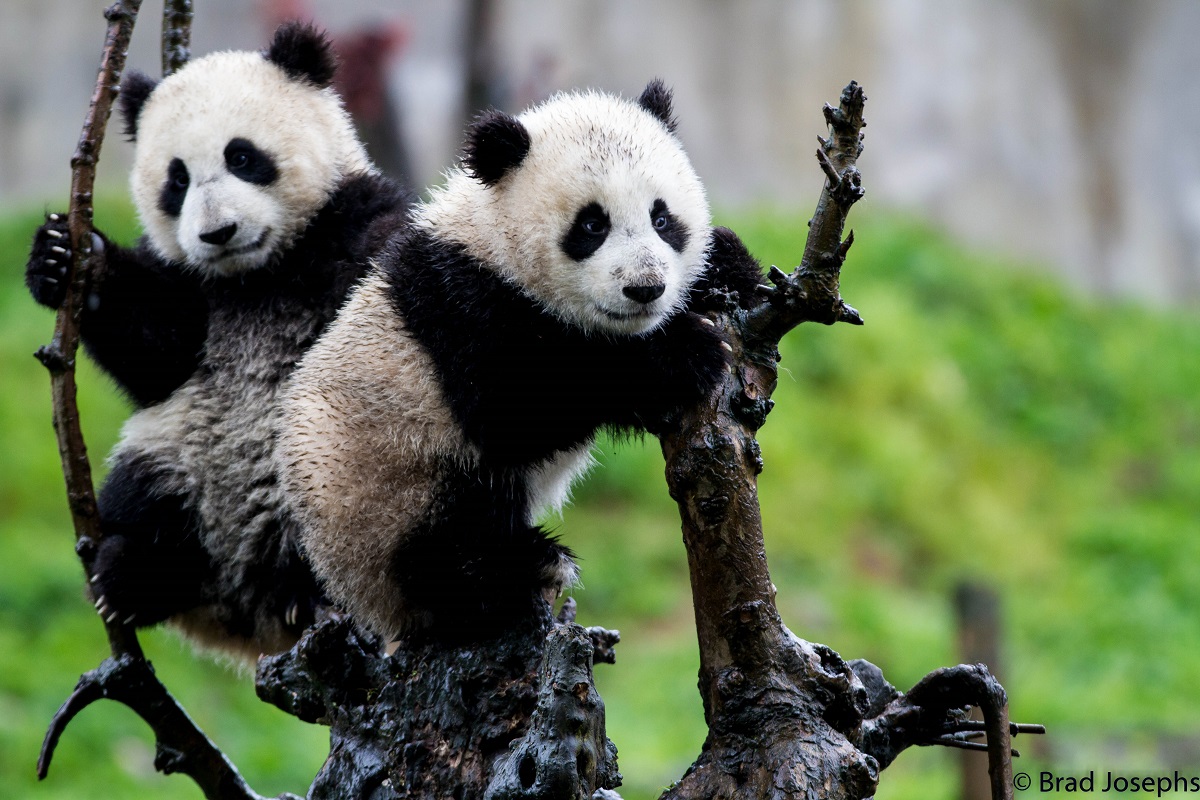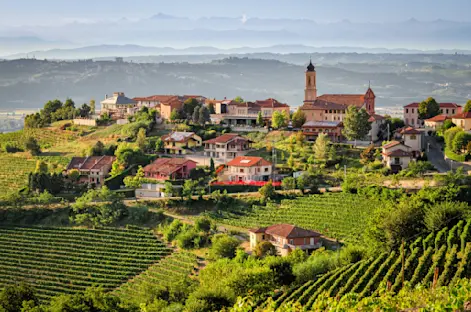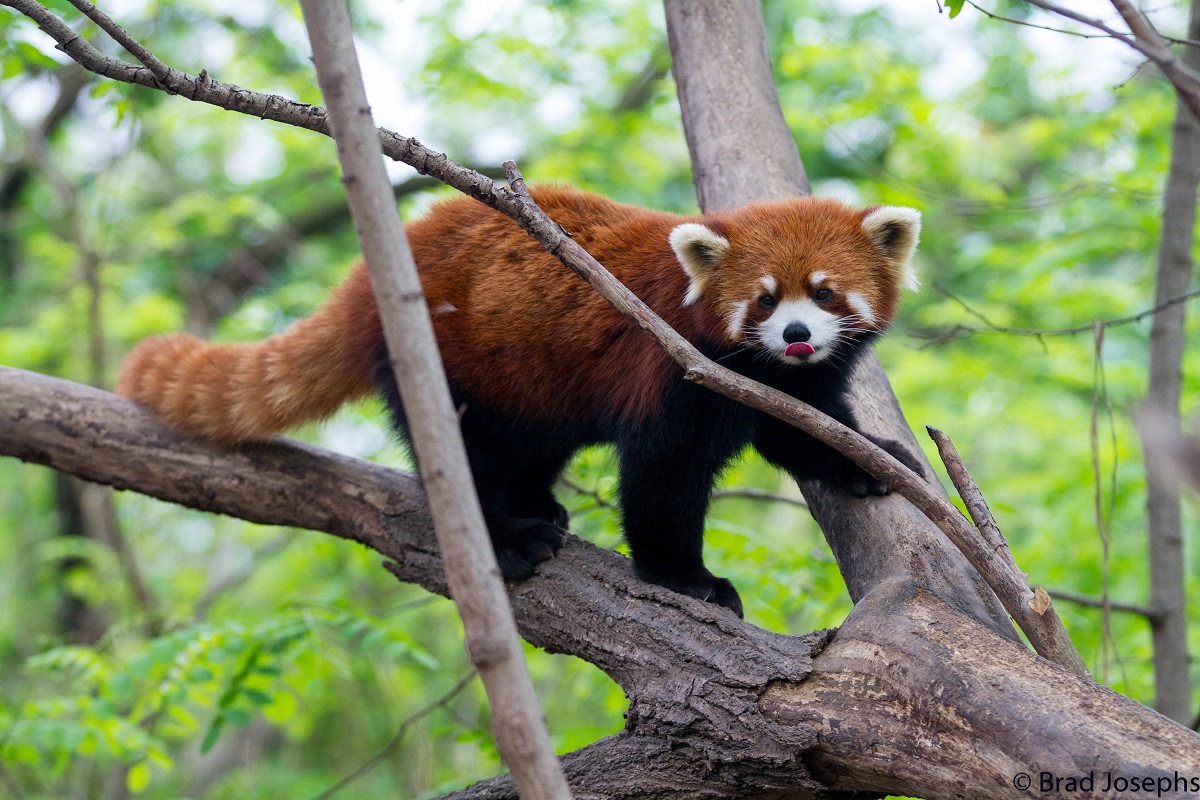1. Rare Wildlife
On treks through dense temperate forests, Nat Hab travelers enjoy enthralling encounters with endangered and elusive wildlife. These mythic-sounding creatures—from endangered moon bears to Chinese leopard cats—reside in China’s remote nature reserves. Nat Hab travelers have exclusive permits to the Wild Panda Nature Reserve, rated Grade I by WWF as a global biodiversity hotspot and harboring 430 different mammal species. This national reserve is home to healthy populations of some of the world’s most endangered and vulnerable wildlife, including at least 60 wild giant pandas. We don’t expect to see them outside of research bases, but other rare species are on view, including golden takin and Tibetan macaques.
At the Golden Monkey Nature Reserve, we’ll photograph blue-faced primates—found only in a small area of temperate forest in central China—feeding on lichen in the treetops of their mountainous home, kept warm by thick coats of silky fur. Another adorable tree-dweller we’ll search for at Labahe Nature Reserve is the rare red panda, a bushy-tailed critter roughly the size of a domestic cat.
Blue sheep, wild boar, musk deer, muntjac and serow amble through the forests, while red and white giant flying squirrels, clouded leopards, hog badgers and civets emerge at night. Brightly plumed birdlife includes Chinese monals, Temminck’s tragopans and golden pheasants.

2. Giant Pandas—and cubs!
Nat Hab’s China nature adventure visits three world-renowned panda research centers, optimizing the chances of observing and photographing these gentle giants. We’ll see plenty of pandas up close, roaming within enclosed bamboo forests. Some of the conservation centers the group tours have captive breeding programs with the aim of reintroducing pandas into the wild, which means seeing babies is a definite possibility!

© Brad Josephs
3. Cultural Gems
Nat Hab groups stop at several villages during their exploration of the Wild Side of China. This includes Qing Xi, a Muslim village with 300-year-old wooden buildings from the Qing Dynasty. At the Mianzhu New Year Painting Village, travelers will be mesmerized by the colorful paintings hung in houses to celebrate the Chinese New Year, a tradition that dates back 2,000 years. Guests also visit Rilong, where influences of Tibetan culture can be seen in the fluttering prayer flags, embroidered costumes, cuisine and intricate architecture. On a Beijing & the Great Wall Extension, walk along the stone pathways of China’s most famous landmark and tour the 15th-century Temple of Heaven, Tiananmen Square and the Forbidden City—home to 24 emperors over the course of 500 years, this royal palace encompasses more than 800 buildings.
© Alex Meniconzi
4. Majestic Mountains
It’s a small wonder why Four Sisters Mountain is dubbed the “Chinese Alps.” It has four serrated peaks, and its tallest, Yaomeifeng (peak of the youngest sister), soars 20,505 feet into the sky. Travelers will hear fascinating folktales of the Four Sisters as they explore the sapphire lakes and meadows of this subalpine terrain. On a hike through Shuangqiao Valley, the group passes Sun-Moon Mirror Mountain and Five-Colored Mountain, the immovable stone seeming to dance with shades of red, yellow, green, blue and white. Nat Hab also ventures into the Minshan Mountains to the Wild Panda Nature Reserve, then journeys to the Golden Monkey Nature Reserve, which lies in the shadows of Sichuan’s tallest mountain. Guests will have many opportunities to gaze at snow-crowned peaks as they wander past waterfalls, geological formations and glaciers.

5. Flavorful Food
Sichuan province is a lush, misty region famous not only for its giant panda population but for its food. Chengdu, the capital, is renowned for its fiery cuisine infused with Sichuan peppercorns, garlic and chilies—in 2011, Chengdu was recognized by UNESCO as a City of Gastronomy. Popular dishes include spicy hot pots, dandan noodles, mapo tofu, pork wontons and stir-fried green beans, which all wash down nicely with a cup of jasmine green tea—an old proverb says that Sichuan ‘has more teahouses than sunny days.’ In Rilong, a village nestled at the base of Four Sisters Mountain, travelers feast on meals influenced by the Jiarong Tibetan population, and there’s also the chance to try a cultural staple—yak butter tea.
Eager to know more? Join Expedition Leader Eddy Savage to learn about the global conservation partnerships rooted here and the vital role these remote reserves play in securing the future of giant pandas:































